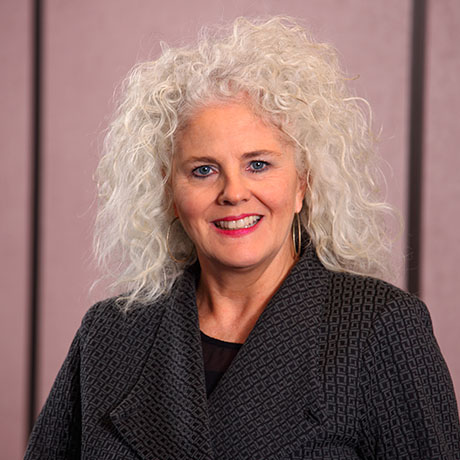When is it Time to Value Your Practice?


Transitioning the practice is probably one of the biggest decisions a dentist will make in their career. Deciding whether to transition the practice to a partner, associate, a new dentist, or corporate dentistry, you will need a plan and experts to help you make the right decision.
3 to 5 Years Before Retirement
Having a financial plan when you are 3-5 years out from selling your practice will allow you to know what the total value of your assets are and what value is needed from your practice to afford to retire. Knowing the value of the practice 3-5 years out will also allow you to focus on reducing debt, increasing production, and collections, which are critical factors in determining the practice valuation.
When developing your financial plan, you will need to have your CPA do a thorough review and analysis of your financials and advise of any necessary adjustments. This would include family members on the payroll who don’t work in the office, expenses that are above industry averages, and other expense benefits being run through the practice. Review your internal and external marketing programs with your marketing professional to focus on increasing new patients and adding additional revenue to the practice.
1 to 2 Years Before Retirement
Once you have an established financial plan and are 1-2 years from retirement, you need to find a dental broker to help with a practice valuation and options for selling your practice.
The benefits of enlisting a professional dental broker are:
- Independent and accredited appraisal of your practice’s worth, the patient population, equipment, and, if applicable, the real estate.
- Knowing what your minimum sales price will need to be to meet your financial goals to retire.
- Exploring the different buyer options for the sale and which one is right for you.
- Developing a marketing plan for your practice that will keep it confidential until a buyer is found.
- Determining the average length of time it will take to market and sell your practice.
- Identifying what improvements or changes could make the practice more attractive to potential buyers.
1 Year or Less Before Retirement
It is time to implement your plan to sell the practice. The average practice takes 6-8 months to sell Pre COVID-19. Some rural practices might average 18 -24 months to sell. Enlisting a professional broker will save you time putting together a marketing prospectus and then marketing the practice locally and nationally. A broker can also assist you with updating your valuation to determine the asking price for the practice. Keys areas to focus on with less than a year are reducing as much debt as possible and keeping the hygiene and doctor production as high as possible.
There is no doubt that the COVID-19 pandemic has created new considerations for anyone who is considering selling their dental practice. Selling a dental practice doesn’t happen overnight. Developing a plan with experts can ensure you get what you want out of a sale while maximizing your dental practice’s value and allowing for a smooth transition to the purchaser.
Omni Practice Group has been helping dentists for over 15 years develop plans for dentists to transition their practice. Our goal is to help you find the right buyer and make a smooth transition of your practice when the time is right.
Contact us today for a free no-obligation consultation with one of our Practice Transition Advisors. We are here to help – Kevin@omni-pg.com.
Read More
Learn about our Everyone for Veterans Webinar January 22
With Jen Bennett, OMNI Practice Group
Please join us for an inspirational webinar to hear how Dr. Theresa Cheng went beyond oral health to help heal our veteran heroes, and hear from others to learn one simple thing you can adopt in your practice to help veterans in your community.
Dealing with Credit Balances in a Dental Practice
Kevin Brady, Practice Transition Advisor, gives dentists important information about credit balances in a dental practice.
Building a Dental Practice FAQ
Steve Kikikis, Healthcare Real Estate Broker, answers 3 of his most frequently asked questions – How long does it take to build out a dental practice, how much does it cost, and how can you save money?
Tips to Avoid Fraud and Embezzlement


We see embezzlement in the dental office all too often. The average embezzlement amount REPORTED is over $100,000 in a dental practice, and we know most is not reported or ever discovered. Please review the following tips to avoid embezzlement, as well as signs from employees to be aware of.
-Limit access to dental software to make adjustments, and format software to disallow deletions or changes after the close of each month. Assign passwords to each employee. Ensure the software company understands that you are the only person that can make changes to the software.
-Clearly set expectations and protocol for making adjustments.
-Train on reading insurance Explanation of Benefits and making accurate insurance adjustments. Verify random EOBs and accounts on occasion.
-Review daily reports for adjustments, provider production (ensure there are no “zero” charges), collections, over-the-counter collections, and audit/deletion. Ask questions and research as appropriate.
-Review and confirm the accuracy of daily reconciliation of deposit, petty cash, and cash drawer. Confirm monthly bank reconciliations.
-Input and use appropriate adjustment codes.
-Review accounts receivable aging reports each month and research any accounts as appropriate.
-Do not allow team members to purchase things for the office and be reimbursed.
-Match up all accounts payable checks with statements and confirm accuracy. Watch for vendors or names you don’t recognize or come up frequently.
-Confirm all bills and credit card statements are accurate.
-Never sign a blank check for a team member, patient, or vendor.
-Ensure checks are in numeric order and keep all voided checks.
-Look for trends, such as missing checks, incorrect deposits, missing charts, increased adjustments, and patient complaints.
-Review the details of each team member’s paycheck and year-to-date numbers.
-Perform background checks according to state law.
-Have your dental-focused CPA involved with your bookkeeping.
-Implement a comprehensive written Office Policy and Employee Manual.
Potential Employee Warning Signs
- Resistance to change or having your dental CPA or consultant view additional practice information
- Collections have slowed with no justified reason
- Daily deposit reconciliation is not being done timely or is inaccurate
- Adjustments increase with no justified reason
- Team member refuses to take a vacation, wants to take work home, has a financial crisis, and/or resents your income and lifestyle
